- The document discusses the Code of Kalantiaw, an alleged 18th century legal code from the island of Negros in the Philippines.
- It was first mentioned in 1913 in a historical fiction work by Jose E. Marco, who claimed it was written by Datu Kalantiaw, a chief on Negros island, in 1433.
- However, historians now believe the Code of Kalantiaw is fictional and was not an actual legal code. It is considered the first known work of Philippine literature.



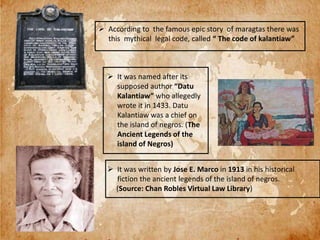







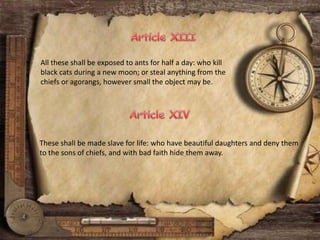
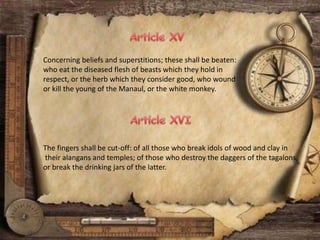


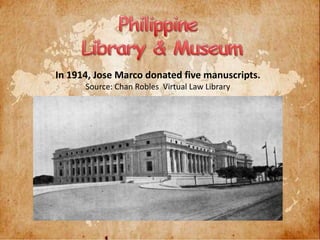

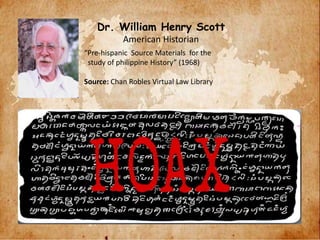


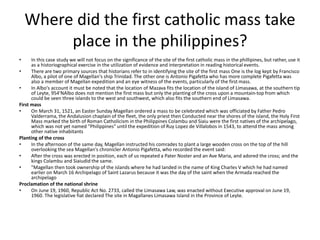
![What happened in the cavity munity?
• (1872) It is a historic year of two events: the Cavite Mutiny and the martyrdom of three priests:
Mariano Gomez, Jose Burgos, and Jacinto Zamora (GOMBURZA).
SPANISH ACCOUNTS OF THE CAVITE MUNITY
• The documentation of Spanish historian Jose Montero y Vidal centered on how the event was event
was an attempt in overthrowing the Spanish government in the Philippines. Although regarded as a
historian, his account of the mutiny was criticized as woefully biased and rabid for a scholar.
Another account from the official report written by the Governor General Rafael Izquierdo
implicated the native clergy, who were then. Active in the movement toward secularization of
parishes. These two accounts corroborated each other.
PRIMARY SOURCE: EXCERPT FROM MONTERO'S ACCOUNT OF THE CAVITE MUTINY
• Source: Jose Montero y Vidal, "Spanish Version of the Cavite Mutiny of 1872" in Gregorio Zaide and
Sonia Zaide, Documentary Sources of Philippine History, Volume 7 (Manila: National Book Store,
1990), 269-273.
• The abolition of privileges enjoyed by the laborers of the Cavite arsenal of exemption from the
tribute was, according to some, the cause of the insurrection. There were, however, other causes.
• The Spanish revolution which overthrew a secular throne; the propaganda carried on by an
unbridled press against monarchical principles, attestator sic] of the most sacred respects towards
the dethroned majesty the democratic and republican books and pamphlets; the speeches and
preaching of the apostles of these new ideas in Spain; the outbursts of the American publicists and
the criminal policy of the senseless Governor whom the Revolutionary government sent to govern
the Philippines, and who put into practice these ideas were the determining](https://image.slidesharecdn.com/code-of-kalantiaw-221218084440-ab391766/85/CODE-OF-KALANTIAW-pptx-22-320.jpg)

